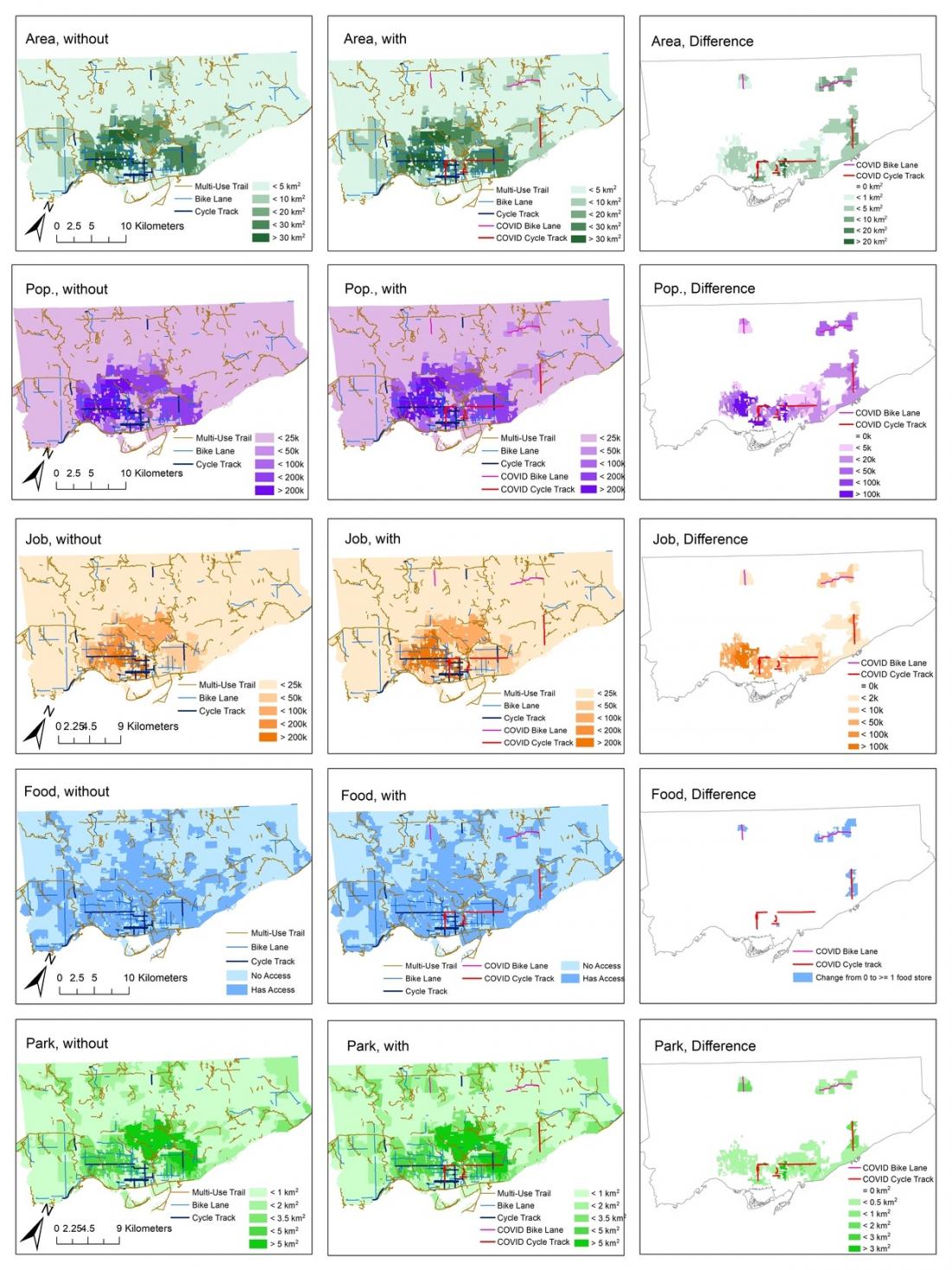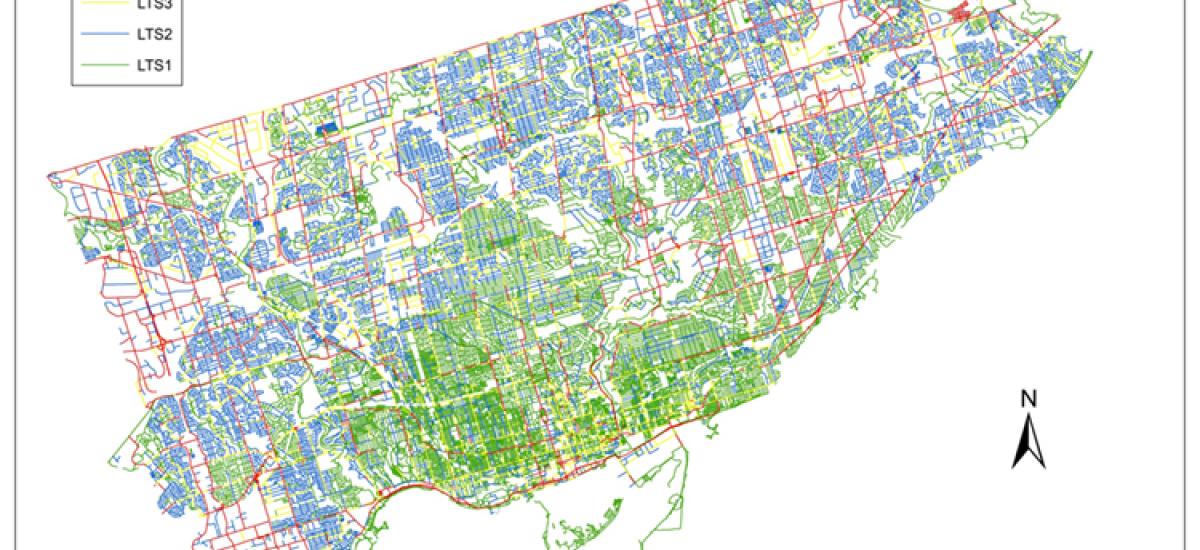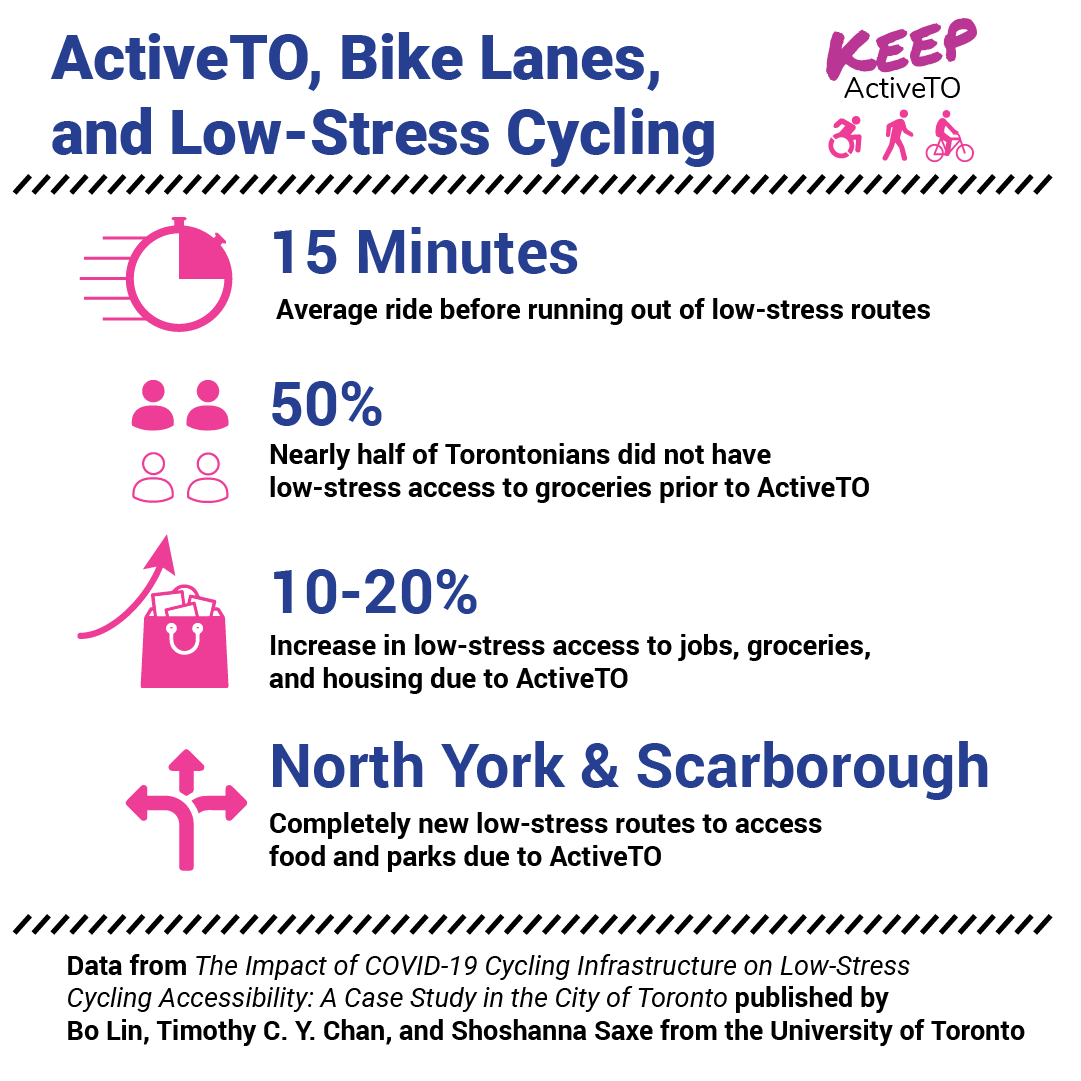
ActiveTO, Bike Lanes, and Low-Stress Cycling

If you’ve had a chance to ride your bike in any of the new bike lanes installed last summer through ActiveTO, it’s easy to see just how much more comfortable these streets are to ride your bike on. They’re less dangerous, less stressful routes to get from your home to the grocery store or wherever else you want to go. It opens up the neighbourhoods around you.
Now, a new research paper backs this up. Titled The Impact of COVID-19 Cycling Infrastructure on Low-Stress Cycling Accessibility: A Case Study in the City of Toronto published by Bo Lin, Timothy C. Y. Chan, and Shoshanna Saxe from the University of Toronto models the positive impact of temporary pandemic bike lanes delivered through the ActiveTO program in 2020.
Roads across Toronto were classified into four groups based on their ‘level of traffic stress’ (LTS), factoring in things like the type of road, the number of cars, the speed of traffic, and what type of cycling infrastructure was present (if any). The higher the number, the higher the stress.
- LTS4: Only “strong and fearless” cyclists would ride here
- LTS3: “Enthused and confident” cyclists would ride here
- LTS2: Most adults would feel comfortable riding here
- LTS1: People of all ages and abilities would feel comfortable riding here
The maps below highlight the positive impact that COVID-19 ActiveTO bike lanes had on job access, grocery access, and park access through low-stress cycling. The maps show how many more people / jobs / grocery stores / parks are accessible through low-stress cycling from a given point.
ActiveTO Research Maps U of T.jpg

Click here for full size image. Maps are from The Impact of COVID-19 Cycling Infrastructure on Low-Stress Cycling Accessibility: A Case Study in the City of Toronto.
Key findings:
- On average the longest someone could ride on low-stress roads was less than 15 minutes before having to use a high stress route.
- Before the ActiveTO cycling infrastructure, 47.2% of Torontonians did not have low-stress cycling access to food stores. More than 18% could not access parks without high-stress cycling.
- With ActiveTO cycling infrastructure, there was a 10-20% increase in population, job and food store accessibility, and a 6.3% increase in park accessibility.
- In the core, some areas experienced cycling access increase by over 100,000 people or jobs.
- ActiveTO cycling projects in North York and Scarborough provided new access to food and parks.
- The greatest increases in accessibility were in the central part of Toronto where existing infrastructure could magnify the impact of ActiveTO. Smaller gains were made in the inner suburbs.
This research demonstrates that access to high quality cycling infrastructure can have wide-ranging positive impacts on the well-being of Torontonians. This research demonstrates the positive impact of Toronto’s temporary ActiveTO bike lanes. Yet, all of these bike lanes are only temporary. Tell Toronto City Council to make these projects permanent, improve them, and expand them — sign and share our Keep ActiveTO petition!
Sign and Share Keep ActiveTO petition
You can read more about the findings and download a PDF of the paper from Transport Findings here.
Cycle Toronto would not be able to continue our work without the support of members and donors. If you want to pave the way for Toronto becoming a better cycling city for all, please consider supporting our work.

